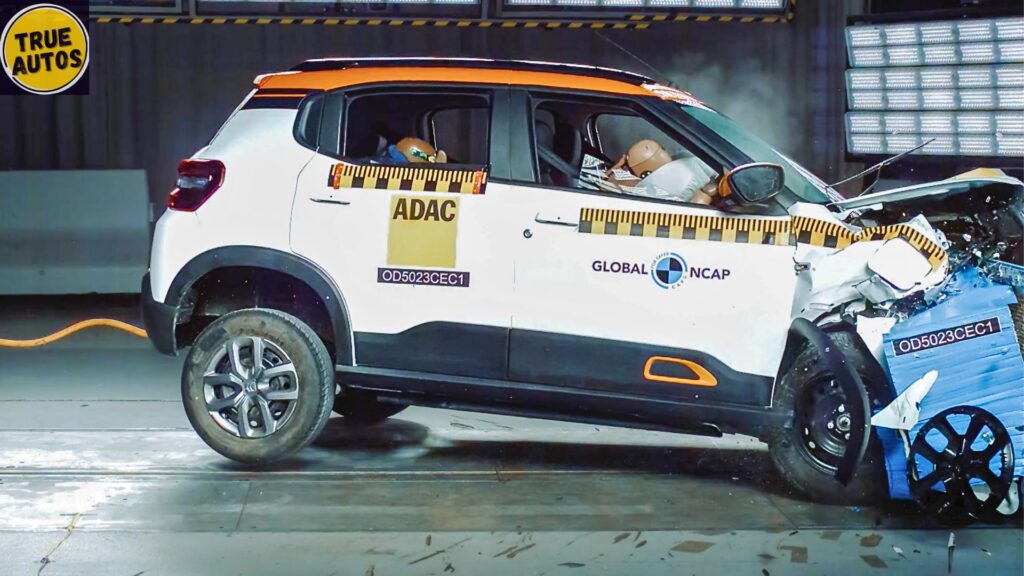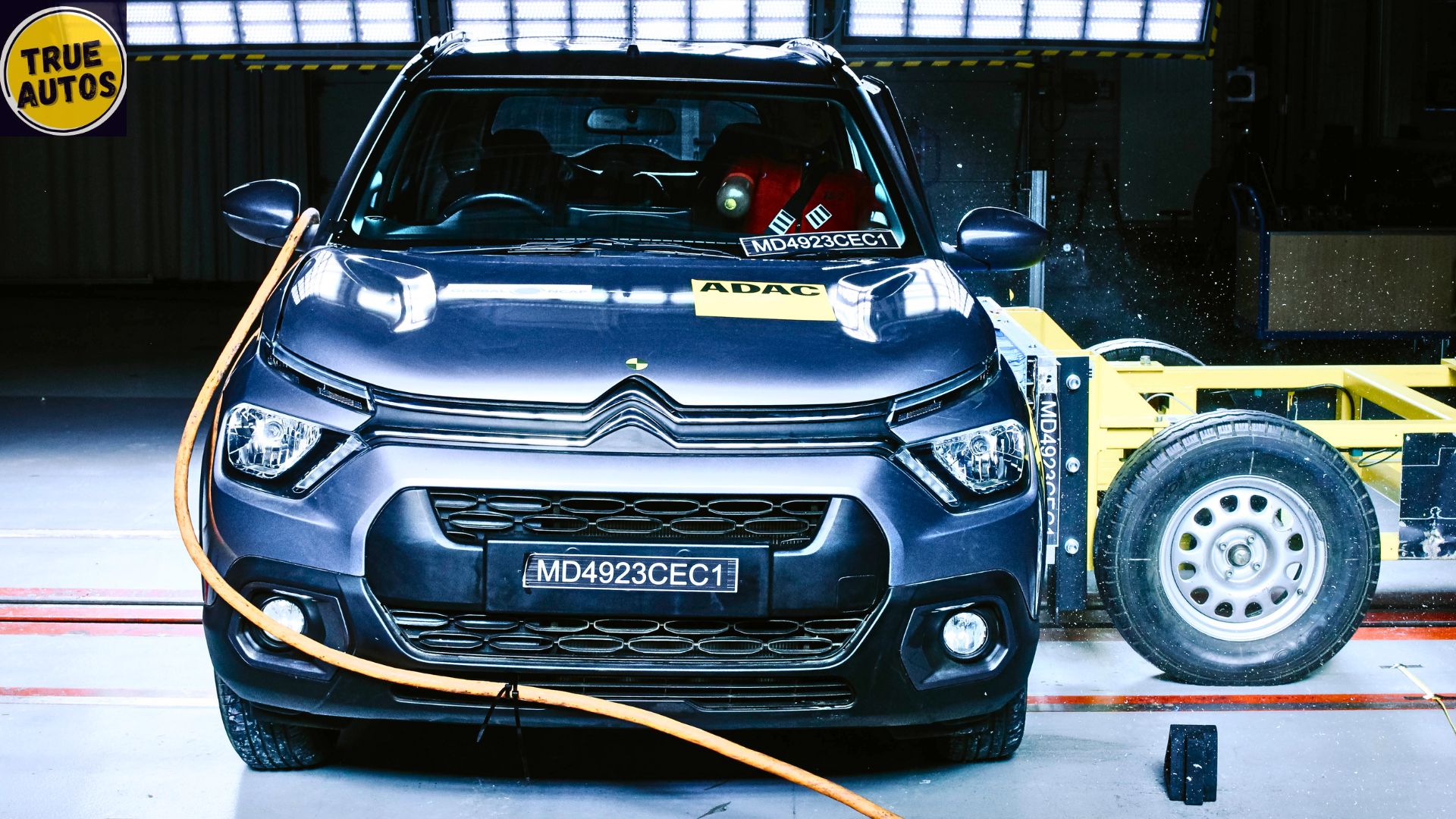Citroen e-C3 not safe, scores 0 star in GNCAP
The Citroen e-C3, with its standard safety features including ABS, EBS, and Dual Airbags, stands as a beacon of Citroen’s venture into the electric vehicle realm. It epitomizes the brand’s dedication to innovation, sustainability, and contemporary design. This compact electric car seamlessly integrates the beloved features of the Citroen e-C3 with an eco-friendly electric drivetrain, presenting drivers with an enticing option in the swiftly evolving world of electric mobility.
In safety assessments of GNCAP, the e-C3 demonstrates commendable performance in certain aspects while also highlighting areas for improvement. In frontal impact tests, the protection offered to the driver’s and passenger’s head and neck is rated as good. However, there are concerns regarding the chest protection, particularly for the driver, which has been deemed weak. The passenger’s chest protection is rated even lower, earning a poor rating and affecting the overall safety rating.
Moreover, there are observations regarding the knee protection, with the driver’s knees receiving marginal protection due to potential impact with hazardous structures behind the fascia. On the other hand, the passenger’s knees fare better, showing good protection. Despite these variations, the bodyshell is deemed stable, capable of withstanding further loadings.

Moving to side impact tests, the head protection is rated as marginal, while the chest, abdomen, and pelvis receive varying levels of protection, ranging from adequate to good. However, the disparity between the results of frontal and side impact tests leads to a reduction in the overall safety rating.
Unfortunately, side pole impact tests could not be conducted due to the unavailability of side head protection, even as an optional feature. Additionally, the absence of ESC as standard and its failure to meet minimum availability requirements further contribute to the vehicle’s safety rating.
In assessments related to child safety, the e-C3 exhibits mixed results. While the child seat for the 3-year-old installed forward-facing using the adult seatbelt fails to prevent excessive forward exposure and head contact with the vehicle interior, the side impact tests show full protection. However, certain positions, such as the rear right position, are exempted for universal CRS by the manufacturer, impacting the dynamic points scored.
Furthermore, the vehicle lacks standard features such as 3-point belts in all seating positions and at least 2 Isofix positions. While there are markings warning consumers about the risk of rearward-facing CRS in the front passenger position, the absence of the possibility to disconnect the passenger airbag in such scenarios is noted.
Overall, while the Citroen e-C3 demonstrates promising features and performance in certain safety aspects, there are notable areas where enhancements are warranted to elevate its safety credentials and ensure the utmost protection for occupants, especially children.

